A reporting project of Stanford Journalism’s Spring 2025 Foreign Correspondence Class
Caption: A woman in Western Kenya standing in front of an improved maize variety through a project funded by USAID. (USAID/Wikimedia Commons)
With the Trump administration’s termination of most U.S. Agency for International Development grants earlier this year, Stanford journalism students studying Foreign Correspondence set out to profile people and programs around the world impacted by the cuts. Here is a sampling of those stories.

Source: Based on documents obtained and reported on by Devex
The data above is based on publicly available USAID terminated contracts. We define cut funding as unobligated money at the time the contracts were terminated. Unobligated monies are any part of the contract that had not been paid out by the time of cancellation. Obligated funds, or monies that had already been paid out before the contract was canceled, are not included in the cut data. Data is current as of March 2025.
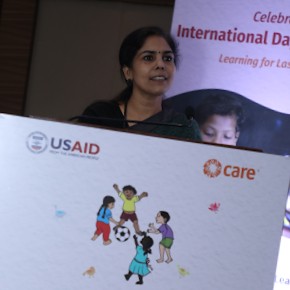
(Photo courtesy of IPEL)
By: Carolyn Kennedy
India’s Partnership for Early Learning (IPEL) lost $4.6 million of its $17 million grant because of USAID cuts. The grant was supporting 11.8 million children ages three to eight by delivering learning materials, training teachers, and implementing assessments to track student progress.
IPEL is the product of the 2020 Indian National Education Policy, which aimed to boost basic literacy and numeracy skills amongst middle school students, particularly girls, by intervening at the elementary level.
The cut means there will be no further guidance on the implementation of resources. Schools now have textbooks but lack training on how to use student assessment software or how to promote gender inclusion in the classroom.
“Without the project support, the monitoring and accountability systems are faltering,” said Seema, an IPEL project manager who works with an international NGO that requested anonymity for fear of political repercussions.
IPEL is currently seeking new donors, particularly from the private sector, to salvage the project while there is still political momentum around education reform.

By: Chase Klavon
Israeli Jewish and Arab children step into the PeacePlayers gymnasium to play competitive basketball.
PeacePlayers, a global non-profit organization, “uses basketball to bridge divides, change perceptions, and develop leaders among Palestinian and Israeli youth in Israel,” according to the PeacePlayers website.
Due to the recent USAID budget cuts, PeacePlayers lost $1.6 million that went towards funding their leadership, conflict resolution education, and basketball programs for over 500 Arab and Jewish Israeli youth in Tel Aviv. In their programming, PeacePlayers aims to change the perceptions of adolescents so that they can not only play together but learn to live together despite their differences.
Surrounded by ongoing turmoil, PeacePlayers teammates call each other on the phone to check in. Despite facing intense conflicts in their everyday lives, the players are able to break down their barriers and put their dissimilarities aside.
“They are the one site who has had a randomized control trial on their program which actually provided scientific evidence that the work of PeacePlayers does change perceptions of young people, of the ‘other,’ says David Cassel, the Global Co-Executive Director of PeacePlayers. “These young people are developing relationships and advocating for the ‘other’ in their own communities.”
According to the trial done on PeacePlayers Middle East, 82% of participants are more positive about the outgroup following their participation in the program.
Without their USAID funding, PeacePlayers International has shifted all of its fundraising efforts to the Middle East division because of its evident success and impact. Many of their staff members took salary cuts, and only the core PeacePlayers programming remains in Tel Aviv.

By: Chantal Eiwanger
UC Davis’s Markets Risk and Resilience Innovation Lab, led by Professor Michael Carter was working to mitigate the impact of climate shocks on small-scale farmers in Sub-Saharan Africa through researching and testing index insurance.
Fear of losses from too much rainfall or droughts or natural disasters deters investment and keeps people from producing relatively little food compared to what’s technologically feasible.
The advantage of index insurance is that individual losses do not have to be verified. Rather, payments are made when an “index” indicates that losses have occurred.
One example was a partnership with the BOMA project, a non-governmental organization that helps poor, rural women across Africa, who are often disproportionately impacted by climate shocks.
“Women are often left holding the bag, meaning the husband says ‘sorry, my livelihood is destroyed. I can’t help you. You figure out how to feed the kids.’” Carter said.
Insurance can protect their assets, but the cuts have halted this progress.
“The losers here are women who were starting to build up something, and now they’re going to lose it,” Carter said.
The original six-year contract was for $23 million and was set to end in July. The program was due to receive a remaining $2.5 million when USAID cancelled funding.

(Roni Ahmed / Save the Children)
By: Maya Lee
On March 9, rumors spread through one of Save the Children’s Health and Nutrition Centers in Syria that it might shut down. Mothers begged staff to keep it open. Save the Children’s Syria Country Director Bujar Hoxha––who rarely makes promises––made one that day.
“I told them we wouldn’t close… I wish I hadn’t,” he said.
That night, he was notified of USAID cuts that would force nearly half of these centers to shut down, halting life-saving nutrition care for more than 40,000 children.
For weeks, he didn’t sleep. He and his team scrambled to raise emergency funds, calling private donors in Europe and the US. Hoxha knew that without Save the Children’s assistance, the children they served wouldn’t survive.
After 14 years of civil war, more than half a million children under age five are malnourished. Hoxha stressed that the closures “come at the worst possible time,” as “the needs in Syria are higher than ever.”
Miraculously, Hoxha recovered enough money from private donors to restore almost all operations. But other aid organizations weren’t so lucky.
Now, Save the Children faces a massive surge––patient numbers have quadrupled––while their budget remains the same. With other clinics gone, their centers are overwhelmed, providing vital care, pediatric services, and supplementary food to treat malnutrition.

By: Greta Reich
Ivan Calder used to spend about 50% of his day fundraising for Health Through Walls, Inc (HTW), a non-governmental organization that supplies health care to prisons in Haiti.
Since the Trump administration cut funding to USAID programs around the globe in March, his days have changed.
“Everything that I’m doing at the moment is about money now,” he said. “I’m a necessary fundraiser, although my heart — it’s just soul destroying. It’s not what I wanted to do when I grew up,” he added.
Calder has been at HTW for three years. He hasn’t drawn a salary since January in solidarity with the 71 staffers who were laid off due to the cuts.
Before joining the organization, he worked at the United Nations, which is where he met HTW president John May who brought him on as CEO. May started the organization 25 years ago to deliver primary health care to prisoners in Haiti.
Haiti’s health system is on the verge of collapse. Prison occupancy levels are at 401% of capacity, or about 11,500 incarcerated people, 82% of whom are unsentenced.
HTW used to be active in all 15 operational prisons in the country, but withdrew from five of them following the cuts. USAID funds contributed $2 million of HTW’s $6 million budget prior to the cuts.
“Any withdrawal of resources — whether it’s in-country or international — is costing lives. And it’s not a dramatic statement, it’s not a puff piece, it’s a statement of fact,” he continued, estimating that several thousands of prisoners will be left without their services.
To address the cuts, the organization is approaching businesses that they haven’t dealt with before, like pharmaceutical companies and donors who have a connection to Haiti.
“We’re here to stay, and we’re going nowhere except forward, and we will fight to do it,” Calder said.
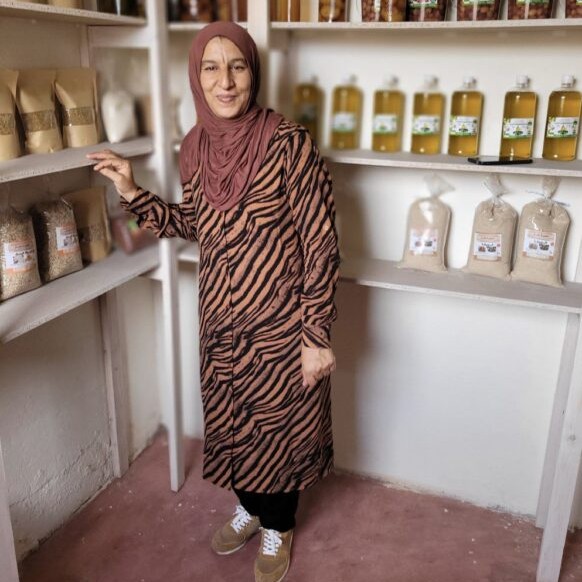
By: Jena Yue
In a sudden blow to some of Morocco’s most vulnerable women, a $20 million program supporting over 1,400 small cooperatives was shut after USAID cuts.
For five years, the international nonprofit GiveDirectly provided unconditional cash grants to cooperatives (simplified forms of small businesses that require minimal documentation). Any running operation could qualify, ranging from home-based sewing shops to small bread vendors — many run by illiterate women in rural, conservative regions.
“We gave $9,000 to cooperatives so they could survive shocks like COVID, inflation, and earthquakes,” said Mahmoud Khattab, a program manager at GiveDirectly. “The goal was to help vulnerable people out of poverty through small businesses.”
When USAID suddenly pulled funding earlier this year, GiveDirectly had just signed a new $16 million contract. A stop-work order halted operations overnight. With USAID funding half of their operations, the entire Morocco office was forced to shut. “We signed a legally-binding contract, but it wasn’t respected,” Khattab said.
With over 60% of their recipients being women, the project wasn’t just about financial aid.
“For vulnerable women, it was a way for them to leave restrictive households, have their own money in their pockets and get a say in the household.” Many used their financial freedom to stand up to their controlling husbands, send their children to school, and create female spaces in traditionally conservative communities.
In Morocco, where 57% of women experience at least one act of violence in the past year, according to local non-profit Mobilising for Rights Associates, economic independence can be life-changing.
One woman from a rural mountain village used her $9,000 grant to turn her sewing skills into a thriving cooperative, where she taught over 30 women how to sew and provided them with employment. “She became a leader in her community, inspiring young girls to dream bigger,” said Khattab.
“These are spillover effects that will be lost. For me, this is the biggest heartbreak” he added.
With no one stepping in, this empowerment will no longer happen. “The opportunity will be lost. No one else is filling the space.”

(Photo courtesy: Deaf-E3)
By: Malaina Kapoor
Temitope Olaniyi describes the Deaf E3 program in Nigeria as “the best thing to happen to Deaf education in Nigeria in a very long time.” But now, it’s gone.
A partnership with U.S.-based Gallaudet University (“the world’s leading institution for the deaf and hard of hearing”), the Deaf E3 Program was launched to tackle inequities facing Nigeria’s Deaf community. The program aimed to bolster education, interpreter training, institutional capacity and more in a country with limited deaf education infrastructure. In 2024, about 1,500 students took part in the program’s trainings.
In September 2021, after a robust interview process, Temitope was offered the role of Deaf E3 in-country teacher lead. In that capacity, he helped lead historic Nigerian Sign Language trainings for educators and Federal Ministry of Education staff across Nigeria’s six geopolitical zones. Through these events, Nigerian educators learned foundational Deaf education techniques that they applied to boost literacy and job prospects amongst their students.
Temitope and his team were just about to launch a new early childhood education initiative – essential in a country where many deaf children don’t enter school until the age of 10. This was to be “the final lap in a long-distance race,” according to Temitope. But they never reached the finish line. In April 2025, Gallaudet officially announced the program’s USAID funding had been cut.
Temitope’s mother passed away just four days before the Deaf E3 program was dismantled, leaving him with the pain of having “to cope with two painful losses at the same time.” And the USAID cuts were so sudden that Temitope never got to say goodbye to the team he describes as family.
“The funding cuts were both emotionally and professionally devastating,” he reflects. “Watching that dream come to a sudden halt… is heartbreaking.”
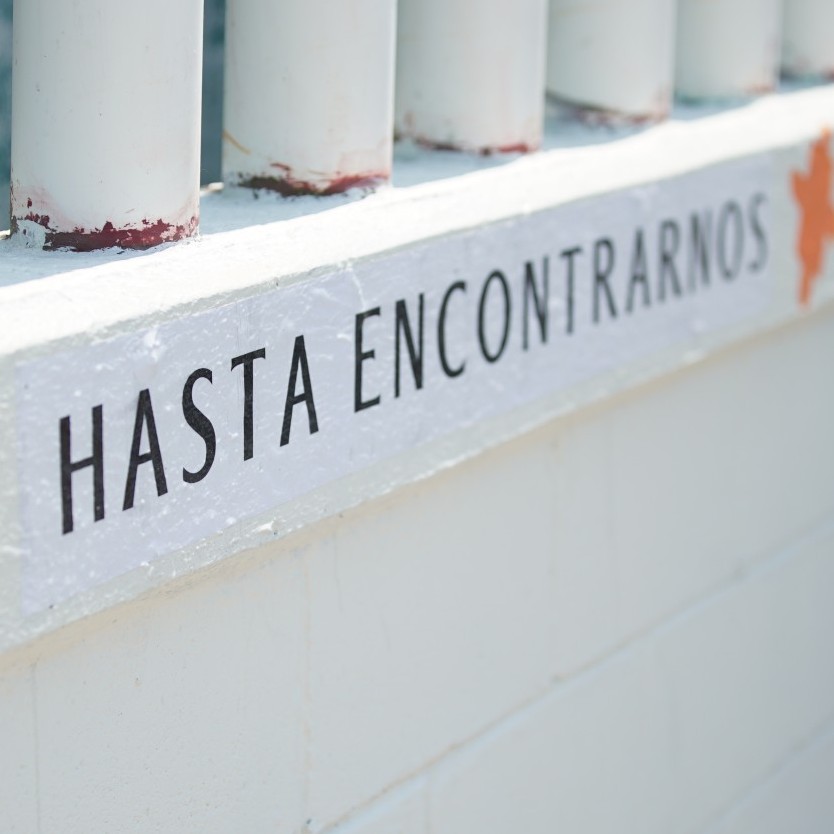
By: Miguel Tejeda
In Mexico, the government acknowledged more than 80,000 missing or disappeared individuals as a result of political or gang violence. Many more cases go unreported. This alarming statistic has led to numerous initiatives aimed at restoring human rights in Mexico and reuniting families with their disappeared loved ones’ remains. Restoring families in Mexico has been a cornerstone of human rights restoration efforts.
The Human Rights Accountability Activity (HRAA), a $24 million initiative funded by the United States Agency for International Development (USAID), funded forensic investigations, reduced backlogs related to mass graves, and helped build bridges between families, civil society, and the government.
“Where there was no space to have dialogue with the families, the project intervened,” said Cristina Hardaga, a human rights advocate and former employee of the HRAA project in Mexico City.
The project had become a pillar for civil society organizations and families of the disappeared, and its cancellation marked, in Hardaga’s words, “one of the most tragic losses.”
The cancellation ended all support overnight. “When we received the termination letter… we basically closed and terminated all the labor contracts and working lines we had with the government and civil society,” Hardaga explained. “We were showing it was possible,” she said. “That’s what made the decision to terminate the project so difficult.”
The HRAA was responsible for accelerating the process of locating disappeared individuals for families. “USAID was, with this project, the biggest donor of all embassies in Mexico supporting these topics,” she said. “Germany is the second, but not nearly as large a contributor.”
Despite losing U.S. support, many Mexican NGOs continue their work under increasingly unsafe conditions. “People are still continuing their work— [people are working from their] NGOs, who are constantly working in the worst conditions. It was a hard one, but they keep going,” Hardaga said. “These people are going to continue pursuing justice no matter what.”
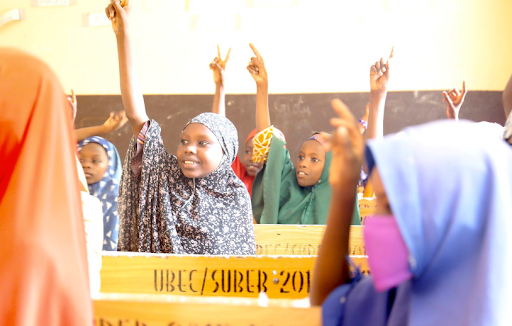
(Photo courtesy: Opportunities to Learn (Nigeria)
By: Mary Ashley Stevenson
The International Rescue Committee provided education, cash support, and nutritional services around the world before USAID dismantlement. The cuts have forced a suspension of “critical programs” leaving “thousands without essential services,” said James Sussman, an IRC communications officer.
Among those cuts was the remaining $4.3 million portion of a $25 million grant for the Opportunities to Learn Project, Kernels of Practice Project, and the Response to Education initiative in Nigeria, which filled gaps in the country’s public education system.
“Education is severely underfunded at the federal level, as the government often budgets a quarter of what experts would typically recommend,” said Leslie Ume, executive director of the Hillside School in Abuja, the Nigerian capital.
“If the recommended budget for public schools is 20,000,000 (Nigerian Naira), the government would only approve of 5 million,” Ume added.

By: Nina Subkhanberdina
At the southern tip of the Negev desert, near borders Israel shares with Egypt and Jordan, the Arava Institute has quietly facilitated environmental diplomacy among Jordanians, Israelis, Moroccans, and Palestinians since 1996. Through academic programs, renewable energy initiatives, and research on transboundary water management, the institute fosters cooperation in a region where the accelerating climate crisis compels communities to look beyond entrenched political divides and act collectively.
Recent USAID funding cuts abruptly halted several critical projects, including a $700,000 project with the University of Haifa examining the impact of climate change on public health in the West Bank, according to Rachel Kalikow, CEO of Friends of the Arava Institute. Another canceled program, an environmental ecology course planned in Cyprus for Israeli and Palestinian students, had drawn significant applicant interest.
“Freezing this aid, it stops the momentum immediately,” said Kalikow.
“These relationships between these communities and between these organizations take years to build,” she added.
Executive Director Tareq Abu Hamid, a Palestinian chemical engineer from East Jerusalem and former senior official in Israel’s Ministry of Science, underscored regional stakes. The projects “give people the right technology and know-how to cope.”

By: Rani Chor
Dara still remembers talking to an elderly widow with five children. She lost her husband during the Khmer Rouge genocide, worked the rice fields alone and hadn’t slept through a night in decades. (Dara asked to remain anonymous for fear of losing their job. Dara’s organization is also unnamed. A pseudonym is used to improve readability and protect the identity of the source.)
“After she came across mental health education and received a survey at the health facility, she said her life seemed to be better and she lived with hope,” Dara recalled. Now she can no longer be followed up with. After the stop-work order, Dara doesn’t know if she’s continuing to receive counseling or medication.
A five-million, three-year USAID-funded project led by former emergency nurse Dara trained clinics in four Cambodian provinces to treat mental health conditions—including PTSD, depression, and trauma—using culturally adapted counseling.
At its peak, one site served up to 500 patients each month. Recognized by Cambodia’s Ministry of Health as a national model for post-conflict healing, the program worked through Buddhist monks, Muslim leaders, and local health workers to identify people showing signs of psychological trauma and refer them to licensed counselors and public health facilities for treatment. The program aimed to create a national curriculum to train every medical professional who works in Cambodia’s mental health system. After its shutdown, small local NGOs have attempted to fill the void—but with limited coordination and mixed results.
“We support not only Khmer Rouge survivors, but also their caregivers and neighbors,” Dara said. “We support everyone in our target areas.”
Between 1975 and 1979, the Khmer Rouge regime killed roughly a quarter of Cambodia’s population through starvation, forced labor and mass executions. The deep psychological wounds continue to affect generations of Cambodians today.
Following the cuts and stop work order, the mental health organization Dara works for shrank from 28 staff to just two.
When the Trump administration deemed trauma programs “non-lifesaving,” Dara rewrote the USAID funding proposal—this time for child and maternal health. It remains unapproved. “My contract ends in June. I’m looking for a new job because I cannot survive if I don’t have a job.”
“Mental health is definitely a lifesaving activity. Every donor should think about that, especially for people in Cambodia who have been traumatized for many generations from war,” Dara said.
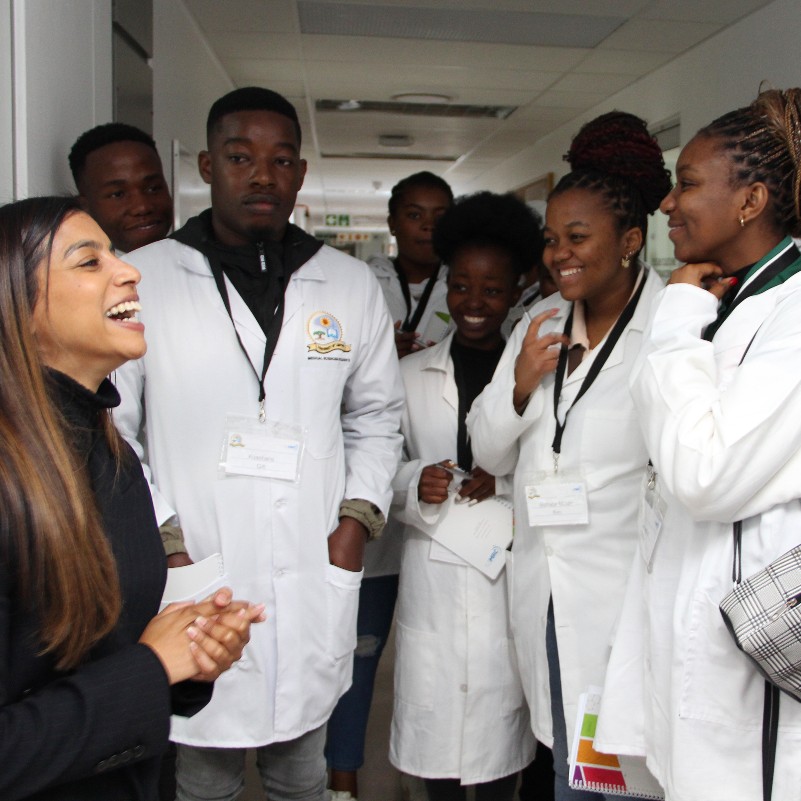
By: Sasha Tuddenham
The South African Medical Research Council was set to begin clinical trials this June for an early-stage HIV vaccine. Then – USAID pulled the $45 million grant dedicated to accelerating the development and testing of HIV vaccines in Sub-Saharan Africa.
The program, dubbed HIV Vaccine Innovation, Science, and Technology Acceleration in Africa (HIV-VISTA), was working to connect policymakers and affected communities to build a region-wide response in developing the first HIV vaccine. USAID had initially promised the funding through 2028.
“This process is receding trust in science,” the research council’s head of Corporate and Marketing Communications, Tendani Tsedu, wrote in an email. “We worked hard to earn community trust and now they feel we are just dumping them which is not the case.”
South Africa has one of the highest HIV case counts in the world. The country documented 7.7 million HIV cases in 2023, encompassing over 16% of the population, according to the World Population Review.
Without funding, millions will lose access to life-saving medication and professional care. It also left six people from the program unemployed, leaving the council’s HIV vaccine research entirely in limbo.
SAMRC’s research team is seeking other funding options. They are currently in discussions with South Africa’s National Treasury and the Department of Health, but new funding has not yet been secured.
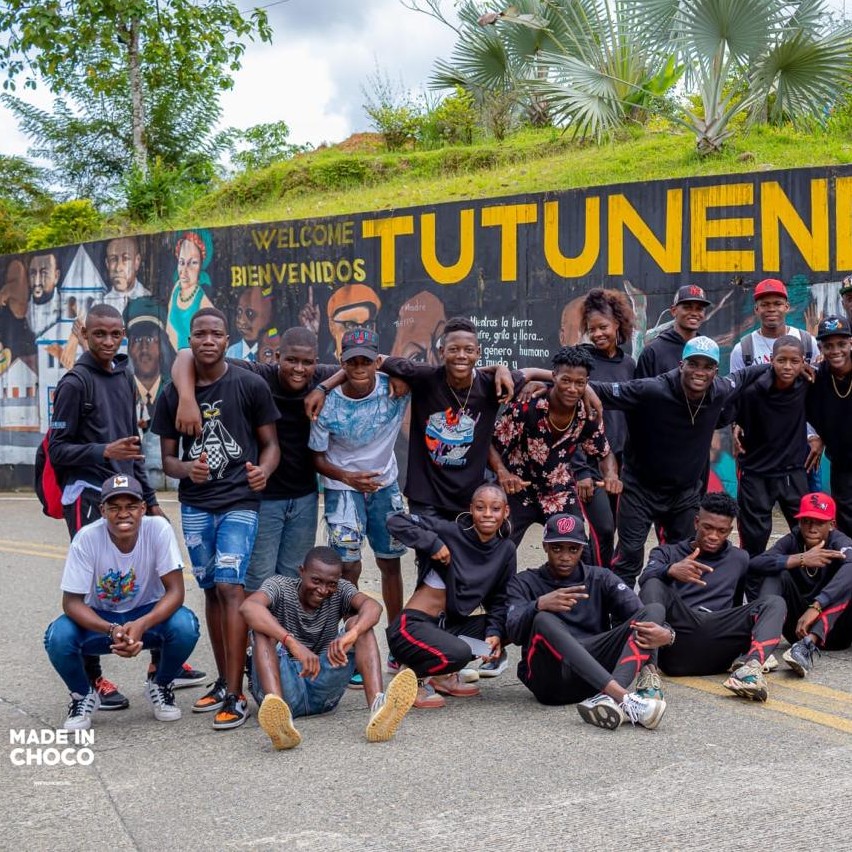
By: Sterling Davies
Before the Youth Resilience Activity (YRA) was created in Colombia back in 2020, Colombia lacked opportunities to support children as they grow into adulthood.
“[The youth] felt that nobody was listening to their agenda,” said Jimena Niño, Chief of Party
and Colombia Country Representative for YRA. “Their necessities were not taken into account.”
As chief of party and country representative, Niño provides strategic guidance for YRA and fosters relationships with the Colombian government, private sector partners, and other international agencies.
The program, which was originally scheduled to go through 2026 and awarded $46 million via USAID, served as a safe and supportive environment for children, especially those surrounded by crime. “The numbers of criminality, illicit crops, everything is going up, and our main
concern is what is going to happen with the youth,” Niño said.
YRA worked to connect each child with social workers to help introduce them to jobs and opportunities in entrepreneurship, business, and politics. Niño explained how the program also gives children the care and warmth that is sometimes lost. “Some of the children have never
heard I love you from their parents,” she said.
USAID cut over $3.5 million of the obligated $46 million amount. With there being no other funding opportunities for the program, YRA closed operations on May 23. “There’s nothing more for YRA in Colombia,” Niño said.
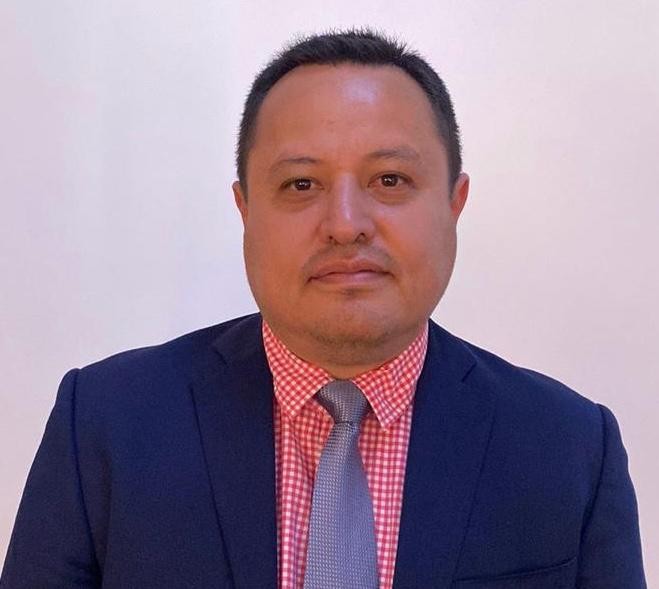
By: Dilan Gohill
For over 20 years, Ramiro Nava worked on USAID-funded projects across Mexico. His most recent role was with ProIntegridad, a four-year initiative launched in 2021. The goal was ambitious: to help build a fairer, more transparent business environment in Mexico.
Then, it all ended without warning.
“We were shut down with no notice. It was Friday, January 24th,” Nava said.
Nava worked as the deputy country program director for American firm Dexis, the organization contracted by USAID to run ProIntegridad. ProIntegridad concentrated on three “priority” sectors, automotive, construction and semiconductors, and mainly operated in northern border states.
Now, with the program abruptly defunded and partners left in limbo, Nava is facing an uncertain future—and watching decades of progress being undone.
“Integrity is very difficult to sell,” Nava said. As he explained, companies need economic incentives to adopt reforms. ProIntegridad helped design those incentives like point systems that rewarded firms with integrity policies and ensured these integrity practices were present throughout companies’ entire supply chain.
“We encouraged them to carry out a very strict due diligence to verify that those companies—the subcontractors—follow those rules,” Nava said.
The program developed a national recognition system—a checklist companies could use to track and verify their implementation of integrity practices. All this, Nava said, make Mexican companies more attractive to foreign investors.

By: Anne Li
The first thing Josephine Nabukenya recalls about the Elizabeth Glaser Pediatric AIDS Foundation’s support program for HIV-impacted youth: It was a place where she could take her HIV medication openly.
Meeting others her age with HIV is what made the program so “mind-blowing,” said Nabukenya, who is now an ambassador for the foundation.
Nabukenya first heard about the cuts during a board meeting earlier this year. The foundation was instructed to terminate programs in Lesotho and Eswatini supported by over $75 million in USAID funding combined, of which $45.9 million had yet to be distributed.
Nabukenya also felt the cuts in her native Uganda, where local HIV programs began to pause operations in the ensuing days.
“The very first thing that anyone in my position would think about is medication,” Nabukenya said. She called her health facility in Kampala to ask if it had drugs and was assured it did.
A week later, the facility was urging its clients to pick up three months’ worth of drugs.
Nabukenya went. The facility, previously staffed by around 20 workers, was left with just one.
Second- and third-line drugs — administered when patients do not respond to the first line of therapies — are becoming harder to find, even in Kampala. First-line drugs remain available for now, but access remains an issue, especially for children with HIV. Poor road infrastructure can make it challenging for caregivers to travel long distances to pick up drugs, and without staff to make home visits, it’s harder to follow up.
“You can easily say that medication is available, but there are so many things that actually ensure that medication is accessed,” Nabukenya said. With the focus now on dispensing drugs, she added, psychosocial work has fallen off — including previously USAID-funded counseling.
Nabukenya worries if life-saving HIV medication will be accessible three years from now. She called for a thoughtful transition to local programs, as opposed to indiscriminate cuts: “You can’t just make a random decision over someone’s life.”

By: Nico Godsick
In mostly rural parts of Kenya like Meru, Kiambu, and Kwale, a new program called Elevate Voice Yake (which means “Elevate Her Voice” in Swahili) was starting to change things for girls. This program was started by the Centre for Rights Education and Awareness, a local women’s rights organization, and funded by USAID. The idea was to help girls feel safe from sexual violence, understand their rights, and feel empowered to speak up on topics that they were supposed to stay silent about.
Workshops were started in local communities where girls met together. They talked about each other’s experiences and learned that they deserve to be treated with dignity and respect. Girls were gaining confidence and starting to dream about futures they had never imagined before.
Just as everything was going as planned, the funding was reduced and CREAW was unable to finance everything the same way. They had to cut some workshops. The outreach slowed down. People were left wondering what would happen next just as they gained hope. It felt like something important had been taken away too soon, as Wangechi Wachira, the executive director of CREAW, explained “The reduction in USAID funding has significantly impacted our ability to sustain these projects, limiting resources available for implementation and outreach efforts,” she said. Some of the community workshops in Kiambu and Meru counties were cut after the funding reduction, which meant fewer safe spaces for girls to meet, learn about their rights, and speak up about abuse. What started as a chance for change was suddenly put on hold.
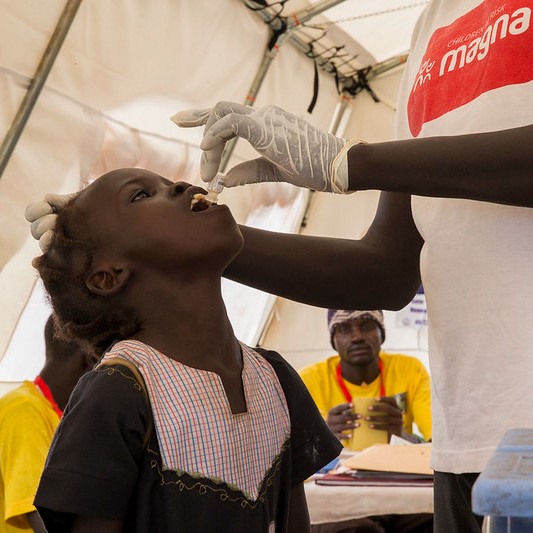
By: Laura Artandi
In the last 20 years, South Sudan has received more than $11 billion in foreign aid. A quarter of it was coming from USAID this year before it was shuttered.
As the newest country in the world, South Sudan has struggled with disease prevention. About 200,000 South Sudanese — approximately 1.7% of the total population — live with HIV. USAID worked to combat diseases and treat patients.
Save the Children was spearheading four projects supported by USAID funding. According to Jacob Masanso, the chief of party for the Multi-Year Resilience Programme in South Sudan for Save the Children, prior to Trump’s inauguration it was expected that changes in funding would be made, as is the norm during changes in administrations.
However, they “were not expecting cuts of this scale,” Masanso wrote in an email.
Seven South Sudanese clinics from Save the Children have been entirely shuttered. Twenty remaining clinics are still operating, but at “suboptimal” levels.
“These sites are currently being managed by 26 community volunteers, with limited oversight,” Masanso wrote.
Stanford student Bior Madol ’28 spent most of his life in a rural area of South Sudan located two hours outside of the capital city, Juba.
“There’s been a long history of people in South Sudan, literally, […] benefiting from aid during the time of crisis and most of it is from USAID and [the] United Nations,” Madol said.

By: Alyssa Savig
Caitlin Alex Roig worries for the next generation of Filipino students.
Her voice was steady, but frustration ran beneath it. “They’re trying to make people not as educated as they can be,” she says, “in order to continue to get away with bad government decisions.”
Roig, whose parents were born and raised in Buhi and Silay, Philippines, has seen how access to education shaped the lives of those before her. Her father grew up under a strict, religiously structured school system — “a lot of the schools had nuns and Catholic priests disciplining and teaching,” she says — and English fluency was considered essential to success. Her mother, meanwhile, recalls a gendered divide in her own schooling: “The boys and girls did different things. The girls had domestic classes while the boys studied more math and engineering-based classes.”
But now, Roig says, the education system in the Philippines is “evolving into something better.” Or it was — until outside forces began to chip away at that fragile progress.
One of those forces, she believes, is the U.S. government’s decision to cut a $42.8 million USAID Grant to the Research Triangle Institute (RTI) — the group behind efforts to improve early-grade literacy and numeracy in the Philippines.
“Without that kind of support,” Roig says, “you lose future critical thinkers. If there are not enough people who don’t understand how the government works, or the world they live in — it will impact how we operate in the future.”
Still, Roig holds onto hope. “The Philippine education system is a little inspired by the U.S., just a little,” she says. “They try to keep it well-rounded, especially for students who can’t afford private schools. But it’s getting harder.”
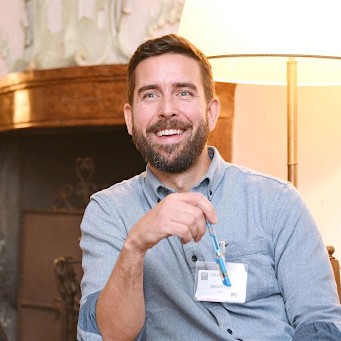
By: Caroline Driscoll
In late 2020, the STOP Spillover Project was granted a five-year contract by the U.S. government, up to $100 million for research. This program was started by Tufts University with 14 other partners aimed at stopping the spillover of zoonotic diseases that pass from animals to humans.
The program worked with six main countries — Bangladesh, Cambodia, Côte d’Ivoire, Liberia, Vietnam, Sierra Leone and Uganda. Their main three goals were prevention, detection and intervention.
The program worked with in-country teams and communities to learn about their knowledge, collaborate,and design meaningful interventions.
One example was in Bangladesh, where researchers focused on live bird markets. These markets were full of highly pathogenic viruses from the birds, and the way the birds were being handled was not sanitary either.
STOP Spillover made sure the air was being circulated and cleaned. It redesigned the space so the poultry was put behind walls. Cleaning protocols were implemented. All of this led to a 60 percent reduction in viruses, according to Jonathon Gass, a co-deputy director for STOP Spillover.
On January 26, STOP Spillover received a stop-work order, while the government reviewed if the grant aligned with the priorities of the new administration. About a month later, STOP Spillover received an email saying the project was terminated. When asked what he would say to the administration about the termination, Gass asked a simple question: “Do you want to go through another pandemic?”
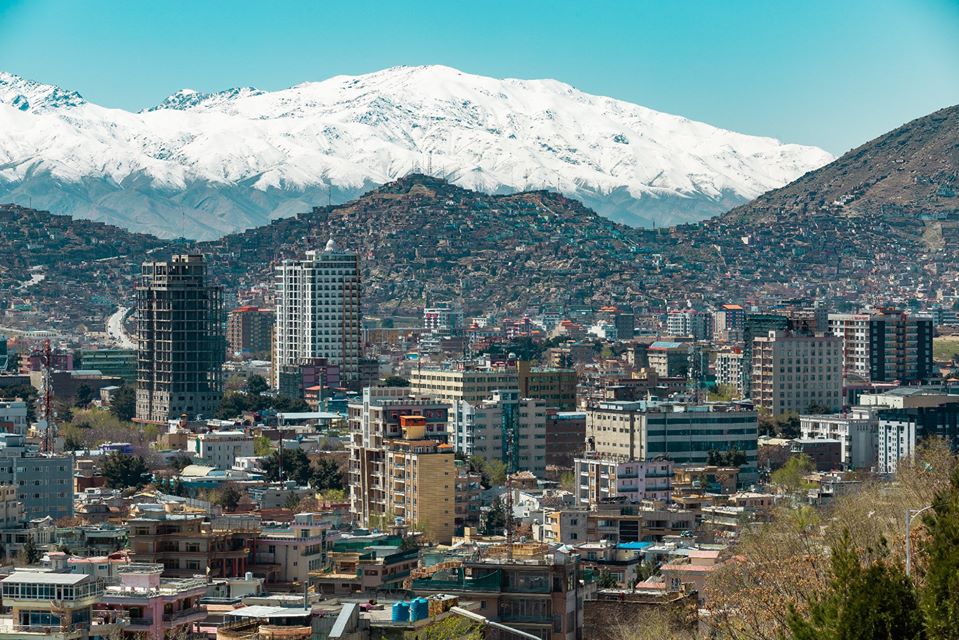
By: Mobina Riazi
When the Afghan government fell and the Taliban took over Kabul in 2021, USAID programs that supported public expenditure and administrative units of the government agencies like prisons, schools, and food and nutrition programs were still operative.
On Jan. 20, President Donald Trump signed an executive order halting all U.S.-funded aid programs in Afghanistan. These cuts particularly impacted those unable or unwilling to participate in the Taliban-controlled economy. As an auditor for the Flexible Implementation and Assessment Team (FIAT II)—a program managed by the U.S. Department of State that operated in parallel with USAID to audit and coordinate funding and partnerships between the Afghan government and the private sector—Mohammad was among the first to lose his job. (Mohammad declined use of his full name for fear of retribution.)
“We were working to preserve human rights and build a better future for our country,” Mohammad said. Now, like many other Afghans, Mohammad is trying to escape the consequences for affiliating with the West.
“It’s not just that we can’t find jobs—we can’t even look for work in Afghanistan.” Despite holding two master’s degrees and nearly a decade of experience, Mohammad is viewed in today’s job market as a kafir (“infidel”), or a Western spy.
He is not alone in his desperation for work. “When U.S. troops withdrew, Afghan soldiers couldn’t find work—but USAID programs still helped feed them and their families.” Mohammad said. “Then, humanitarian funding was cut.”
The economic pressure was crippling.
“The first thing is safety, if you don’t have safety, you can’t look for work or support your family,” Mohammad said. “Many have no option but to go into hiding or to flee the country. Others are trying to send their kids abroad to find work and send money back home.”
Those who sought refuge from the Taliban in Pakistan or Iran are now being sent back. USAID funding cuts have weakened deportation protection programs and strained the capacity of neighboring countries to support Afghan refugees.
“We are a very poor country. There are those who rely on humanitarian assistance, but also those who rely on the jobs this assistance creates.”
When the last U.S. military plane left Kabul, it didn’t just mark a military withdrawal—it marked the end of democracy in Afghanistan. “Now everyone is hopeless,” Mohammad said. “There’s no one left to ask questions, no one left to give answers. No democracy. No human rights. There is nothing left here.”
Kelly Belardi, Lucy Thomas, Diego Mlakar and Johan Sotelo contributed to this report.
